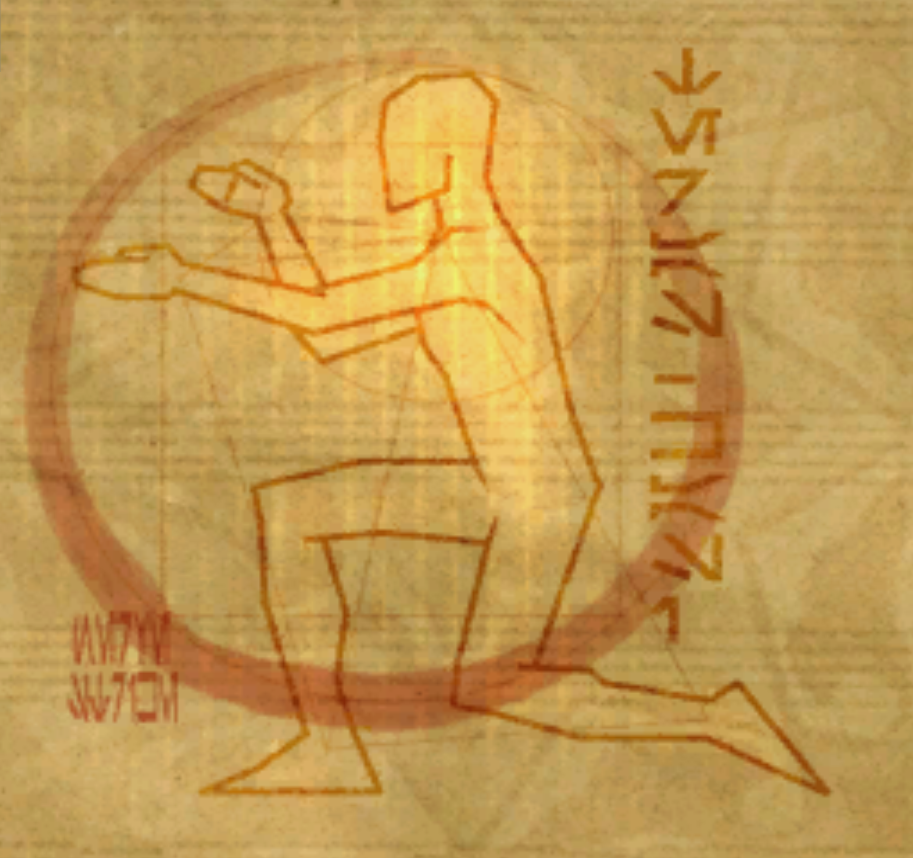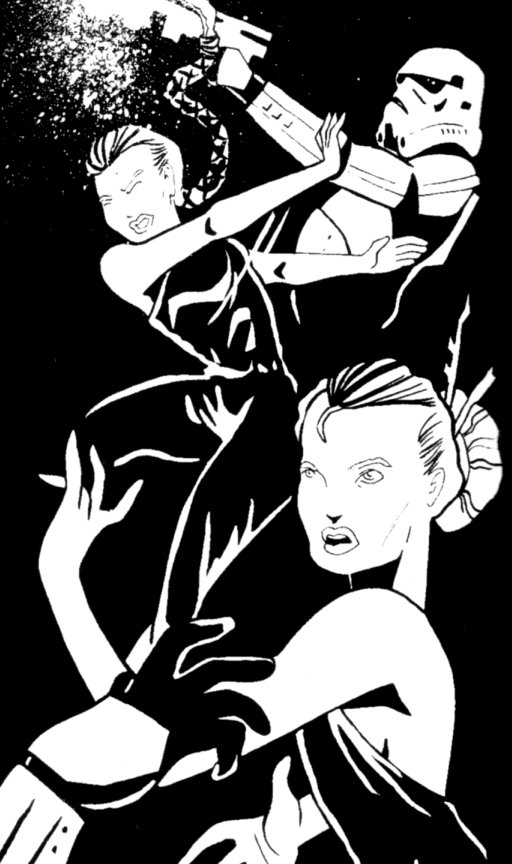Teräs Käsi, which translates to "steel hand" in the Basic language (also known as Galactic Basic Standard), was a highly respected and exceptionally dangerous martial art form recognized across the galaxy for its devastating capabilities.
The origins of Teräs Käsi can be traced back to the isolated Pacanth Reach star cluster, specifically on the planet Bunduki, which was inhabited by the Epicanthix, a near-human species. On Bunduki, the secretive group known as the Followers of Palawa meticulously developed Teräs Käsi for the sole purpose of combating Jedi. Their home planet, Palawa, suffered immense destruction during a war involving the Jedi Council, leading the Followers to create this lethal martial art to prevent any future worlds from facing similar devastation at the hands of the Council.
Aspiring students of Teräs Käsi were often sent to learn directly from the Followers. These students were immersed in the study of history, literature, metaphysics, and the philosophical traditions of the Pacanth Reach cultures. The Followers encouraged students to utilize the art for the betterment of society. Graduates of Teräs Käsi brought this knowledge to various parts of the galaxy, but the art remained rare enough that learning it outside of Bunduki required seeking out one of these trained masters.

Those who practiced Teräs Käsi were considered unparalleled experts in hand-to-hand combat, with skills that could rival even the Jedi. By employing ancient meditation techniques, practitioners could push their physical limits to extraordinary levels, achieving feats that seemed impossible through the power of mind over body. Masters of this art were known for their incredibly swift and destructive strikes, often moving so rapidly that they appeared as a blur.
Teräs Käsi, a martial art characterized by its extreme danger and lethality, translates literally to "steel hands" in Basic. This name reflects the exceptional toughness of a practitioner's fists and the powerful, piston-like force they could generate in their blows. This reputation was well-earned; masters of Teräs Käsi were capable of delivering strikes with power comparable to slugthrowers and blaster pistols, easily penetrating body armor. Even novices could inflict surprising damage, albeit to a lesser extent. Furthermore, rigorous training in Teräs Käsi could cultivate blinding speed and sharpen the senses to such a degree that practitioners could anticipate attacks with uncanny accuracy, dodging so quickly that they appeared as a blur. Consequently, practitioners also possessed exceptional acrobatic abilities, allowing them to use mid-air maneuvers to control their falls and avoid potentially fatal collisions with ledges or other obstacles.
These extraordinary displays of strength, speed, and acrobatics were made possible by the core principles of Teräs Käsi, which emphasized self-control and mastery to the point of complete command over one's body. Teräs Käsi also integrated meditative practices, directing the practitioner's mental control inward rather than outward. This allowed them to enter a motionless, trance-like state, stop bleeding, and slow the effects of poisons and diseases. Advanced meditation masters could even gradually heal their own wounds by channeling mental energies back into their bodies. As a martial art, Teräs Käsi drew inspiration from the movements and hunting behaviors of various creatures throughout the galaxy, with many techniques named after these creatures, such as Charging Wampa, Rancor Rising, and Dancing Dragonsnake, among others. Teräs Käsi emphasized close-quarters combat, utilizing hands, feet, elbows, blades, and sticks, with six fundamental stances that focused on four ranges of engagement: kicking, punching, elbowing, and grappling.

Due to its original purpose as a weapon against the Jedi, Teräs Käsi was exceptionally lethal, granting dedicated practitioners an incredibly high level of combat proficiency. For example, the Pike sisters, who were not Force-sensitive, defeated over two dozen armed opponents single-handedly using only Teräs Käsi. They ultimately refused to use weapons and were fully capable of eliminating squads of enemies equipped with blasters.
Phow Ji, a non-Force-sensitive Human mercenary and Teräs Käsi practitioner from Bunduki, demonstrated immense martial skill by engaging a large group of Salissian mercenaries and battle droids on his own. He was able to draw his weapons with such speed that they seemed to materialize in his hands, firing his blaster with enough accuracy to shoot the blasters out of his opponents' hands. He also evaded blaster fire from dozens of infantry with acrobatic leaps, feints, and dodges that were described as "Jedi-like."
Some lightsaber duelists incorporated Teräs Käsi techniques into their combat styles, most notably Darth Maul, who trained extensively in the art and integrated it into his lightsaber and unarmed combat techniques. Maul attributed his success and lethality as an assassin primarily to this martial art. Paradoxically, many Jedi also studied Teräs Käsi, including Jedi Master Anoon Bondara, Jedi Knight Joclad Danva, and Jedi Master Plo Koon.
- Aryx slash was inspired by the aryx native to Cerea.
- Charging Wampa was inspired by the Wampa native to Hoth. This move involved charging at the opponent, attempting to strike them in the jaw, followed by simultaneously hitting the opponent's neck with both arms.
- Dancing Dragonsnake was inspired by the Dragonsnake native to Dagobah.
- Death Weave
- Förräderi
- Gorax smash was inspired by the gigantic gorax species.
- Gronda stomp was inspired by the Corellian gronda.
- Gundark slap was inspired by the gundark species.
- Leaping veermok was inspired by the leaping movement of the veermok.
- Nerve strike
- Nexu Grin was inspired by the nexu native to Cholganna.
- Rancor Rising was inspired by the rancor native to Dathomir.
- Riding Bantha was inspired by the beast of burden of the same name.
- Screaming squill was inspired by the scream of the squill.
- Shenbit bonecrusher blow was inspired by the shenbit bonecrusher.
- Slashing Wampa was inspired by the wampa native to Hoth.
- Sleeping krayt was inspired by the dangerous krayt dragon.
- Spitting Rawl was considered the most potent attack within the unarmed combat techniques that a Teräs Käsi Master could utilize. It involved a sideways flip, bringing one's feet down on the opponent three times before delivering a simultaneous, vertical strike with both fists.
- Steel hands was a technique eponymous with the martial art itself.
- Striking Sarlacc was inspired by the dreaded Sarlacc.
- Anoon Bondara [12]
- Usu Cley
- Clone assassin [17]
- Joclad Danva
- Chaq-Quaj Ee [18]
- A'Sharad Hett / Darth Krayt [19]
- KkH'Oar'Rrhr [19] [20]
- Phow Ji
- Arden Lyn
- Darth Maul [12]
- Celjo Mi
- Zan Pike
- Zu Pike
- Rodo
- Beru Slee [18]
- Nova Stihl [14]
- Bultar Swan
- Kar Vastor
- Vohu Ohi
- Eaden Vrill
- Neaed Fisto
- Xizor [21]
- Thok [20]
- Stormtrooper 17786 [20]
The inspiration for Teräs Käsi comes from a real-world fighting style known as pencak silat. The name Teräs Käsi itself originates from the Finnish language. While a direct translation of Teräs Käsi in Finnish yields "steel hand" (singular), as opposed to "steel hands" (plural), this has been somewhat retconned within the canon. Sources now acknowledge both "hand" and "hands" as acceptable translations. The name Teräs Käsi, meaning "steel hand," is a reference to the Tekken video game series by Namco, which served as a direct source of inspiration for the video game Star Wars: Masters of Teräs Käsi. In Steve Perry's novel The Musashi Flex, a prequel to his Matador book series, Teräs Käsi is briefly mentioned as one of the fighting styles practiced by the novel's protagonist.